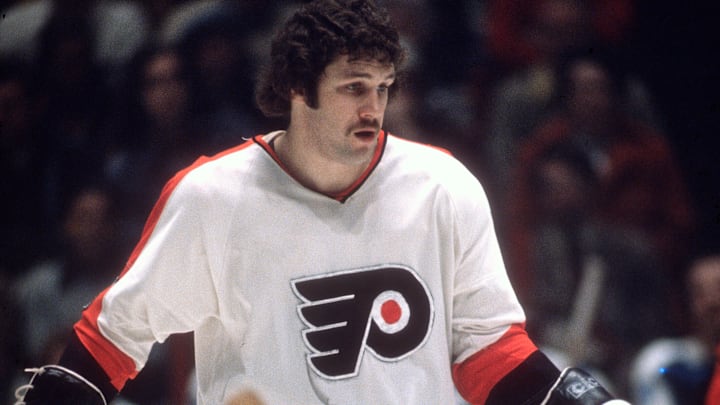When you think of the Philadelphia Flyers, the first thing that comes to mind is a physical, gritty style of play. A style of hockey that emphasizes aggressive play, like hitting and getting into fights, to intimidate opponents and gain the advantage. But the Flyers are not the only team to do this. Every NHL team implements this strategy in some way or another, whether it be one line or the entire roster.
The reason this style of play is so closely associated with the Flyers is the legacy of the "Broad Street Bullies". The closest thing the NHL will get to a team like the Danbury Trashers, the early 70s Flyers achieved sustained success built on aggressive physical play. However, why did the Flyers build the team around this style of play, and why has it had this legacy on the franchise?
The reason for the Flyers building a team full of "bullies"
1967 was a year of systemic change for the NHL. After 25 years of only the "Original Six" playing against each other, the NHL was set to add six expansion teams to double the league size. However, the issue was that there was significant opposition from hockey purists who believed that expansion would ruin the league.
Because of this, the rules for the expansion draft made it next to impossible for these teams to build a competitive roster. It was filled with a lot of have-beens and never-weres.
However, Flyers general manager Keith Allen got an idea. Instead of trying to build a team like the "Original Six" and other expansion teams did, why not focus on grit and toughness? Essentially, zag when everyone else zigs and try something new to revolutionize the game.
This led them to select players like Gary Dornhoefer and Ed Van Impe in the Expansion Draft—two players who put physicality first.
However, the bigger contributors came in the 1969 NHL Draft. During which they took two cornerstone pieces in Bobby Clark and Dave Schultz. Clark was the offensive star for the Flyers during that time and is still the franchise leader in career points.
Schultz, on the other hand, defined the Broad Street Bullies mentality. Nicknamed "The Hammer", he is widely considered the greatest enforcer in NHL history. He was constantly getting into fights and laying big hits to protect Clark. This led him to own the NHL record for most penalty minutes in a single season with 472.
Allen's hunch was correct, as the Flyers only missed the playoffs twice in their first decade of play. Even with the team consistently leading the league in penalty minutes, they still consistently put in some of the best records in the NHL.
Things reached their peak from 1973 to 1975, when the team won back-to-back Stanley Cups—the first non-Original Six team to lift the Cup since 1927. They also went to the Cup Finals in 1976 but were swept by the Canadiens.
The Flyers were the first team to use a physical style of play and achieve sustained success. While teams had enforcers in the past, they never embraced that style of play like the Flyers did. It can be argued that without the "Broad Street Bullies," the era of physical play we saw in the late 1970s and early 1980s never would have come about. It's a team that forged a new way to play the game.
More from Broad Street Buzz
